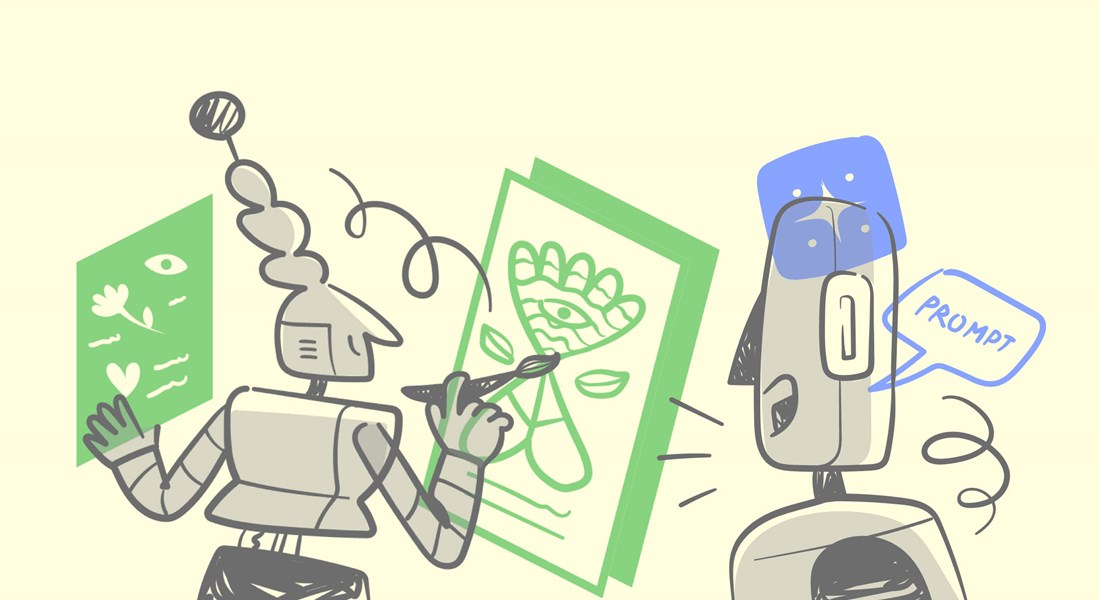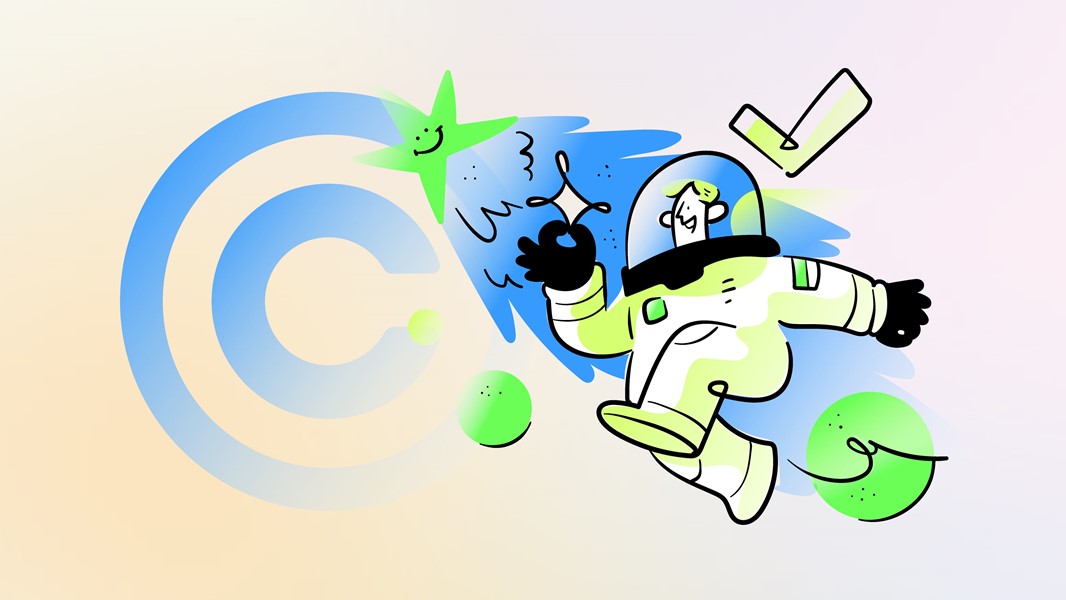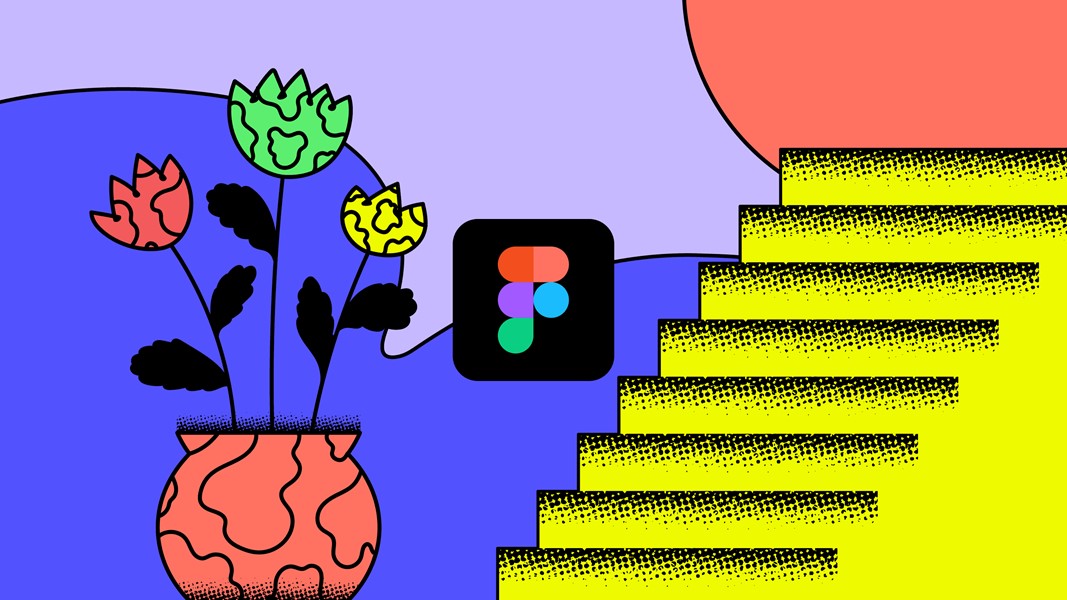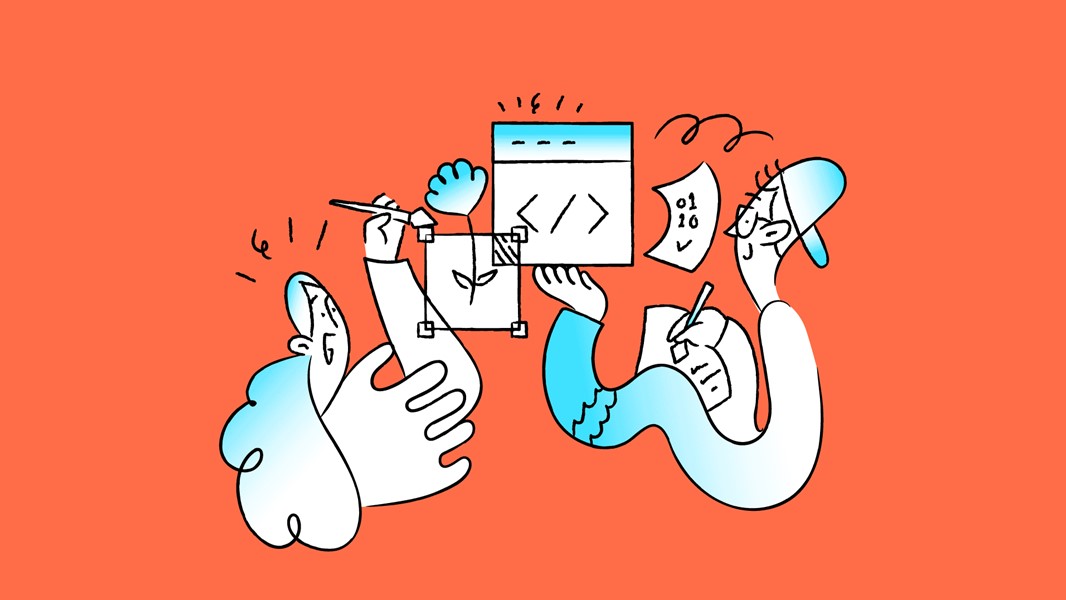
Human made illustrations in the Era of Ai
In the age of artificial intelligence, human-made illustrations continue to hold a unique place in the creative landscape. While AI-generated art has made significant strides, there are several reasons why human illustrations remain valuable
This fascinating dichotomy between human creativity and artificial intelligence has sparked a new era in the world of visual arts, challenging our perceptions of creativity, originality, and the very essence of artistic expression.
The rise of AI-generated art has undoubtedly revolutionized the creative industry, offering new possibilities and pushing the boundaries of what we thought was possible. With algorithms capable of producing stunning visuals in mere seconds, it's easy to wonder if human illustrators might become obsolete. However, the reality is far more nuanced and complex.
Human-made illustrations possess an intrinsic quality that AI, despite its remarkable capabilities, struggles to replicate: the human touch. This elusive element encompasses a range of factors that make human art uniquely compelling and irreplaceable.
One of the most significant aspects of human-made illustrations is the emotional depth they convey. Human artists draw from their personal experiences, memories, and emotions, infusing their work with a level of authenticity that resonates with viewers on a profound level. Each brushstroke, line, or color choice is a reflection of the artist's inner world, creating a connection between the creator and the audience that transcends the visual realm.
Moreover, human creativity knows no bounds. While AI operates within the parameters of its programming, human artists can break rules, challenge conventions, and venture into uncharted territories of imagination. This ability to think outside the box and create truly original concepts is what keeps human-made illustrations at the forefront of innovation in the art world.
Cultural context is another area where human illustrators excel. Artists are deeply rooted in their cultural backgrounds, allowing them to incorporate nuanced references, symbolism, and traditions into their work. This cultural authenticity is particularly valuable in an increasingly globalized world, where preserving and celebrating diverse perspectives is more important than ever.
The collaborative nature of human-made illustrations is yet another advantage. Artists can easily adapt their work based on client feedback, engage in dynamic creative processes with other professionals, and bring multiple perspectives to a single project. This flexibility and ability to iterate based on human interaction is something that AI-generated art currently lacks.
Interestingly, the very imperfections that AI strives to eliminate in its pursuit of technical perfection are often what make human-made illustrations so appealing. The slight inconsistencies, unique quirks, and personal style of an artist contribute to the charm and character of their work. These imperfections serve as a reminder of the human behind the art, adding value and authenticity to the final product.
Ethical considerations also play a role in the ongoing relevance of human-made illustrations. As AI-generated art raises questions about copyright, originality, and the potential for mass-produced imitations, human artists offer a clear alternative. Their work is original, traceable, and free from the ethical dilemmas surrounding AI and intellectual property.
Looking to the future, it's clear that the world of illustration will not be dominated solely by either human artists or AI. Instead, we are likely to see a fascinating coexistence and collaboration between the two. AI may become a powerful tool in the hands of human artists, augmenting their capabilities and opening up new avenues for creativity. At the same time, the unique qualities of human-made illustrations will continue to be cherished and sought after.
In conclusion, while AI-generated art has made remarkable progress and will undoubtedly play a significant role in the future of visual arts, human-made illustrations remain irreplaceable. The emotional depth, boundless creativity, cultural authenticity, and ethical clarity they offer ensure their enduring value in the creative landscape. As we move forward in this era of AI, it is the harmonious integration of human artistry and technological innovation that will likely define the next chapter in the world of illustration.
Human-made illustrations and art serve as the foundation for AI's learning and understanding. Consequently, no matter how advanced AI becomes, it will always rely on its training sets.
Things that Human Artists and Illustrators Offer and Cannot Be Replicated by AI
Emotional Connection
- Human artists infuse their work with personal experiences and emotions
- Illustrations carry the artist's unique perspective and interpretation
Creativity and Originality
- Human imagination can produce unexpected and innovative concepts
- Artists can break rules and conventions in ways AI may not
Cultural Context
- Human illustrators understand nuanced cultural references and symbolism
- Illustrations can reflect specific cultural experiences and traditions
Customization and Collaboration
- Artists can easily adapt their work based on client feedback
- Human-to-human collaboration allows for dynamic creative processes
Imperfection and Style
- The "imperfections" in human art often contribute to its charm and uniqueness
- Individual artistic styles are difficult for AI to replicate authentically
Ethical Considerations
- Human-made illustrations avoid the ethical concerns surrounding AI-generated art
- Artists can ensure their work is original and free from copyright issues
While AI continues to evolve in the field of illustration, human artists bring irreplaceable qualities to their work. The coexistence of AI and human-made illustrations is likely to shape the future of visual arts, with each offering unique strengths and possibilities.
Powered by Froala Editor
Share this article
We hope you enjoyed reading this article, to receive more of our updates, inspiration and highly detailed tutorials on illustration and icon design.
Join our mailing list, we don’t spam or share emails!
More articles from the blog

Understanding Commercial Licenses and Royalty-Free Stock Illustrations
So, you've found yourself in the dazzling world of design. Congrats! Whether you're crafting a snazzy website, a killer ad campaign, or simply trying to make your next PowerPoint presentation less yawn-inducing, stock illustrations are your way to go
Monday, 22 July 2024
illustrations UI/UX
boost-ui-designs-with-illustrations-in-figma
Have you ever experiences something similar: You’re designing a sleek new app, and you’ve nailed the layout, typography, and color scheme. But something’s missing. The interface feels a bit lifeless, like a gourmet dish missing that pinch of salt.
Wednesday, 17 July 2024
Tutorials
Unveiling The Creative Process on How We Draw Our Vector Illustrations
Providing transparency during any creative process is key - It helps build relationships with user-trusted content about artwork development methods and fosters connection between its creators and followers.
Monday, 5 June 2023
TutorialsWe’ve prepared something special for you
- 25% Discount code: Hunters25Off
- A special illustration pack for product hunt And your stack - Free Download

